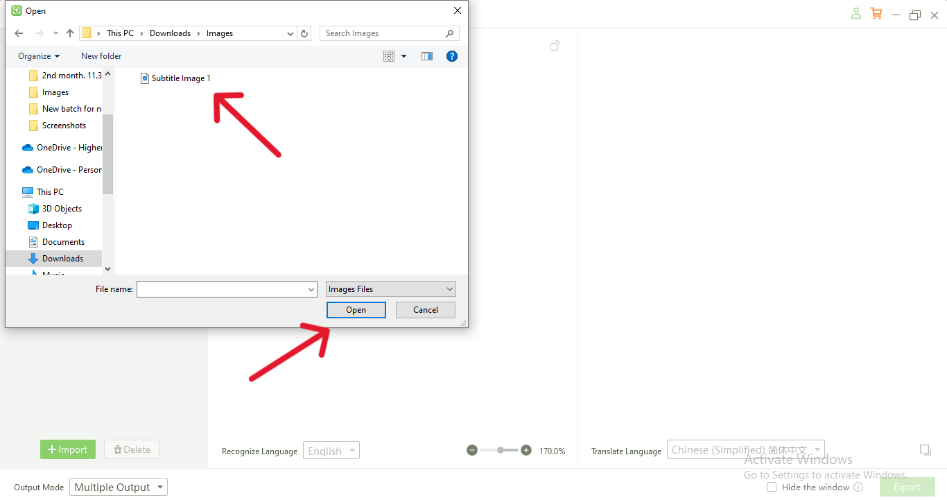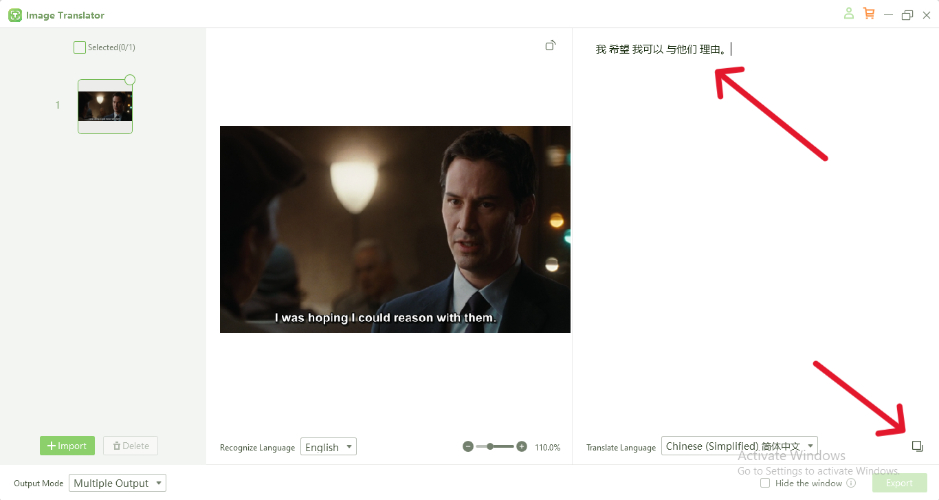How to Translate Subtitles for Movies and TV Shows
- Part 1. Why Accurate Subtitle Translation Matters
- Part 2. Steps for Translating Subtitles
- Part 3. Best Practices for Translating Subtitles
- Part 4. Tools for Translating Subtitles
- Part 5. Step-by-Step Guide: How to Translate Subtitles with PDNob Image Translator
- Part 6. Conclusion
Subtitles have become a vital component of modern media, enabling movies and TV shows to reach broader, multilingual audiences. As entertainment becomes increasingly globalized, translating subtitles for films and television programs is essential for ensuring that content is accessible to all.
In an era of global connectivity, films, TV shows, and online video content are no longer confined by language barriers. With a growing demand for multilingual subtitles, it has become essential to make content accessible to viewers around the world. Subtitles provide the necessary translation of spoken language into text.
However, translating subtitles is not just about converting words from one language to another; it involves preserving the meaning, tone, and emotion of the original content. A well-translated subtitle ensures the viewer experiences the same impact as the original audience, maintaining the integrity of the message, whether it's a drama, comedy, documentary, or action-packed thriller.
Part 1. Why Accurate Subtitle Translation Matters
Translating subtitles is not a mere task of word-for-word conversion. Here are some critical reasons why accurate subtitle translation matters:
Preserving the Meaning and Tone of the Original Content
The primary goal of subtitles is to retain the meaning and tone of the original content. While literal translations might work for simple texts, they can fail to convey the cultural nuances, humor, and emotional depth of the original language. Translators must balance accuracy with the preservation of the original tone and context.
Legal, Cultural, and Ethical Considerations
Subtitles also have legal and cultural significance. For instance, some content may include culturally sensitive material that needs to be adapted for different audiences. In many cases, there are legal regulations around translations, especially in countries with strict censorship laws.
Ethical considerations are also vital in avoiding translations that misrepresent or offend viewers from different cultures.
Ensuring Accessibility for Global Audiences
Accurate subtitle translation ensures that media content is accessible to a global audience, regardless of language barriers. This accessibility is crucial in today’s diverse world, where people from different linguistic and cultural backgrounds consume content on a daily basis.
For international platforms like Netflix, Amazon Prime, or YouTube, subtitles in multiple languages are necessary for reaching broader audiences, boosting viewership, and expanding market reach.
By providing accurate translations, you help ensure that everyone, regardless of their native language, can fully appreciate the content, understand the dialogue, and feel included in the cultural context.
Enhancing Viewer Engagement and Emotional Connection
Accurate subtitle translation does more than just help viewers understand the content—it also plays a critical role in maintaining the emotional connection between the viewer and the material. Whether it's the intensity of a heartfelt dialogue or the punchline of a joke, the way subtitles are translated affects how the viewer emotionally connects with the story.
Poor translations can dilute the impact of key moments, reducing the emotional resonance of a scene. On the other hand, thoughtful and precise translations can enhance a viewer's engagement with the film or TV show, ensuring that the intended emotions and subtleties are conveyed. This level of care is especially important in films with heavy emotional or cultural context, where every word can hold significant weight.
Part 2. Steps for Translating Subtitles
Translating subtitles involves several steps to ensure quality and accuracy. Here’s a breakdown of the process:
1. Transcribe the Original Content
The first step in translating subtitles is to transcribe the original content. This process involves converting the audio (dialogues, sound effects, etc.) into written text. It is essential to accurately capture the dialogue in its original form, including pauses, jokes, and expressions that might impact the translation.
Tip: This is the ideal point to use transcription software to speed up the process if the audio is long or complex.
2. Translate Subtitles Accurately
Once the transcription is complete, the next step is to translate the text into the target language. This is where the translator’s expertise comes into play. While manual translation ensures accuracy, it can be time-consuming, so automated tools like PDNob Image Translator can make this process faster.
PDNob Image Translator can extract text from video files and offer instant translations, which is incredibly helpful when working with large amounts of subtitle text or when translating videos that are not in text format. It supports multiple languages and can assist in translating subtitles quickly and efficiently.
3. Timing and Syncing
After the translation, the subtitles need to be synchronized with the video. Subtitles should appear and disappear at the right time to match the dialogue, ensuring the viewer can follow along without confusion. This step is crucial for creating a smooth viewing experience.
Tip: Subtitle timing involves adjusting both the duration and the specific on-screen moments when text should appear. Special care must be taken to ensure that the timing aligns with the flow of the conversation.
Part 3. Best Practices for Translating Subtitles
When translating subtitles, there are several best practices to follow to ensure that the translation is not only accurate but also culturally relevant and effective:
Maintain Brevity and Clarity in Translated Text
Unlike other forms of writing, subtitles require brevity. Viewers must read the subtitles quickly, which means long or complicated sentences should be shortened without losing meaning. Aim to communicate the same idea as concisely as possible while maintaining clarity.
Avoid Literal Translations
While it’s tempting to translate word-for-word, doing so often leads to awkward or unnatural sentences that miss the essence of the original content. Idiomatic expressions, puns, and humor require particular attention to ensure they translate culturally and contextually. It’s better to adapt the translation to make sense in the target language rather than rely on literal conversions.
Proofread and Test Subtitles with Native Speakers
One of the most important steps is proofreading and testing the translated subtitles with native speakers of the target language. They can spot errors in grammar, syntax, and tone that may not be obvious to a non-native speaker. Feedback from native speakers ensures that the subtitles are both linguistically and culturally accurate.
Part 4. Step-by-Step Guide: How to Translate Subtitles with PDNob Image Translator
PDNob AI Image Translator is one such tool that can simplify the translation process. The software can extract text from image-based subtitles and translate it instantly. It supports various languages and is particularly useful for handling non-text-based video files, such as scanned subtitle images or videos with embedded text. PDNob Image Translator is efficient, fast, and can help streamline the translation workflow.
Other tools available for subtitle translation include software like Aegisub (for subtitle editing), Subtitle Edit, and Google Translate for minor translations, but PDNob Image Translator is ideal for translating text within video files or images.
Here’s a simple step-by-step guide to using PDNob Image Translator for translating subtitles:
- Download and Install the Software
- Upload the Image
- Extract the Text
- Choose the Target Language
- Save and Export




Part 5. Conclusion
Translating subtitles is an essential task for making content accessible to a global audience. By preserving the original meaning and tone, translators ensure that viewers in different languages and cultures can connect with the material. Accurate translations play a vital role in maintaining the cultural integrity of the content, especially when dealing with humor, idiomatic expressions, or culturally sensitive topics.
To streamline the translation process, professional tools like PDNob Image Translator can be a great asset. With its text extraction capabilities and support for multiple languages, PDNob Free AI Image Translator can speed up the translation process while maintaining high accuracy and quality.
By following best practices, using the right tools, and testing with native speakers, you can ensure that your subtitles provide a high-quality viewing experience for international audiences.
Speak Your Mind
Leave a Comment
Create your review for Tenorshare articles
 PDNob Image Translator
PDNob Image Translator
Instantly translate various types of images to text.






